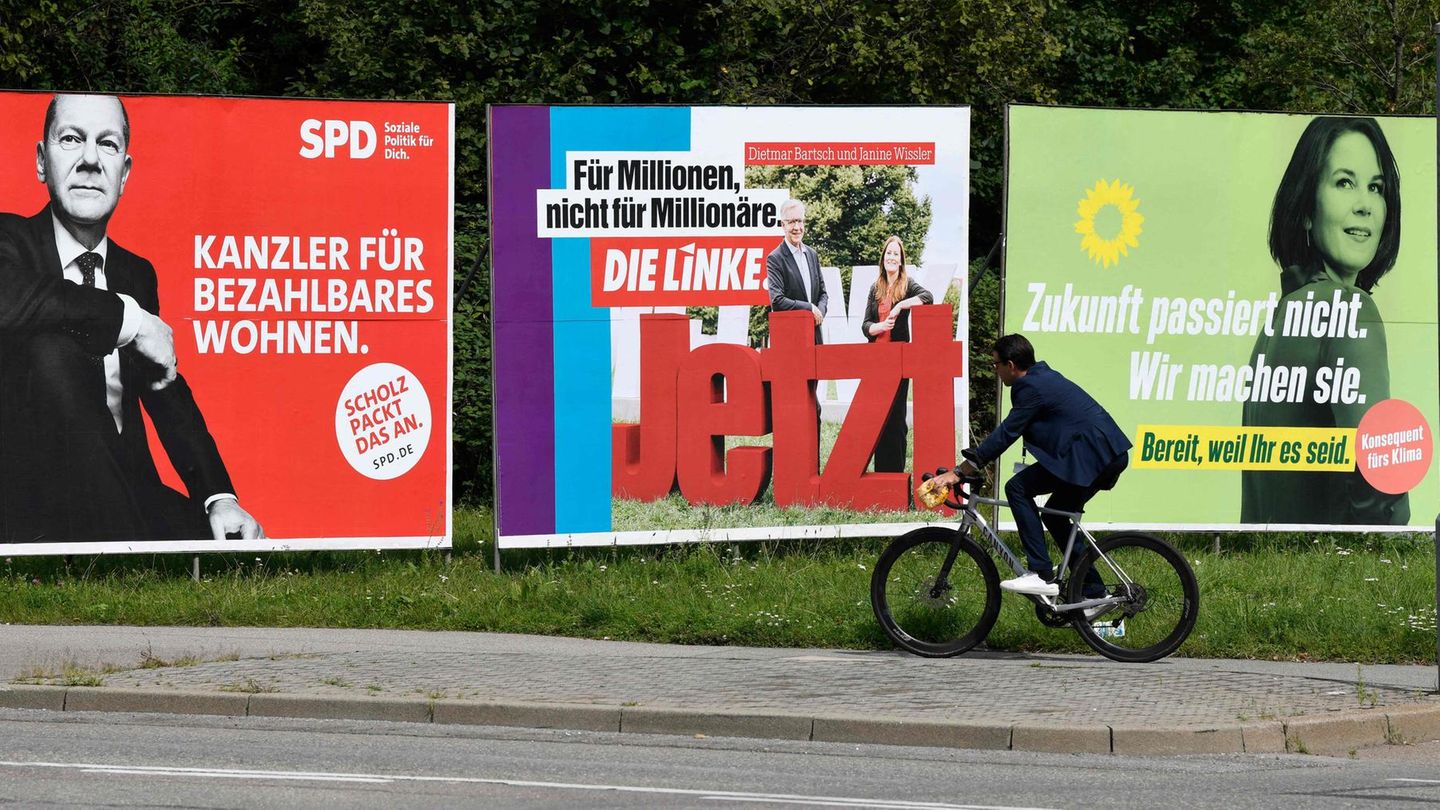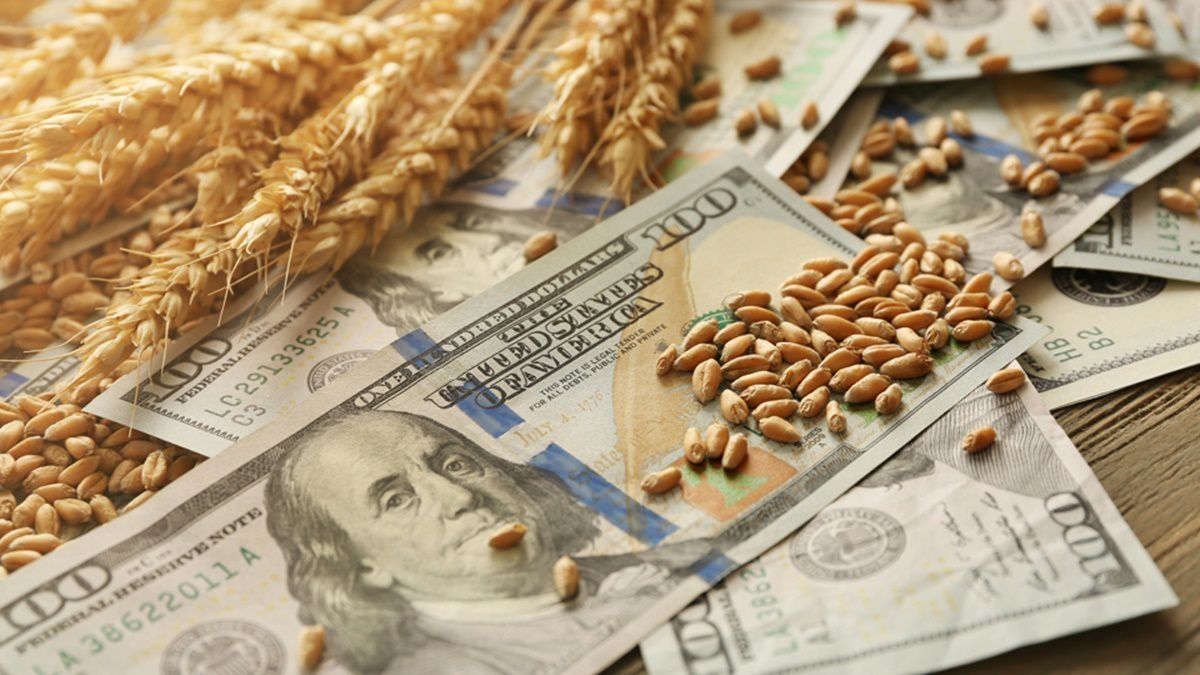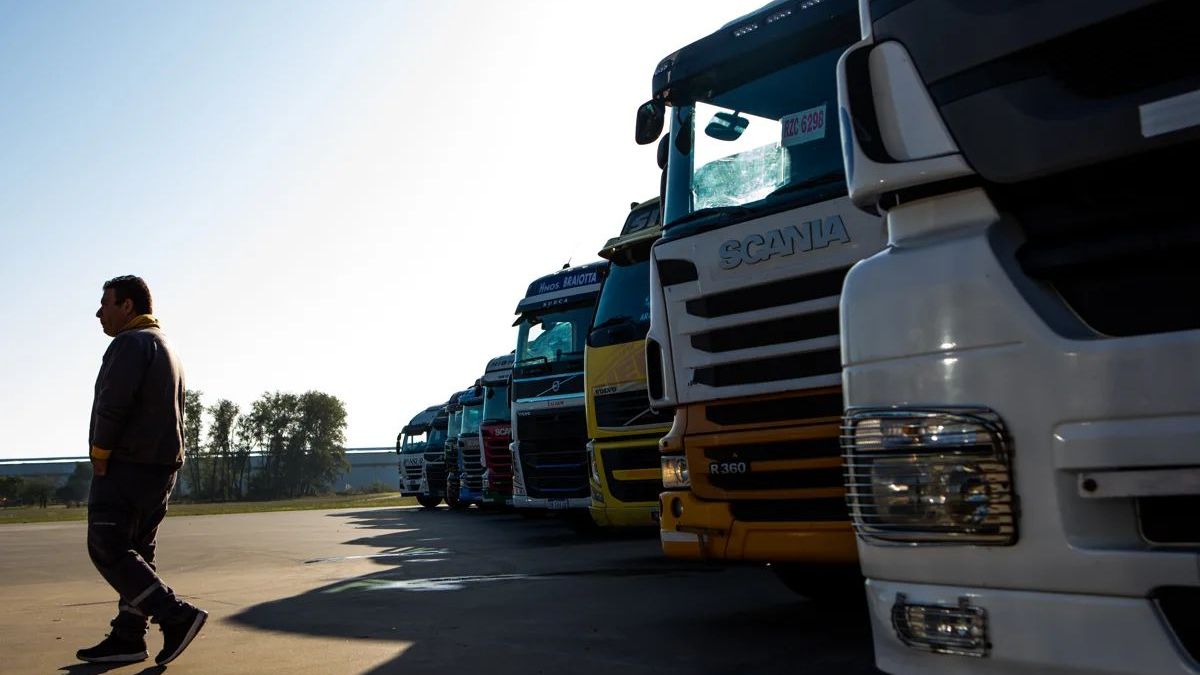Fact check
Is the republic about to change course with a red-green-red government alliance? The Union is bringing the election campaign to a head. The SPD is trying to dispel the specter of a shift to the left. But there are still many questions.
Union Chancellor candidate Armin Laschet immediately attacked his SPD opponent Olaf Scholz head-on. “If there is an arithmetical majority, even if you are in second place as a party, you will form a coalition with the left,” said Laschet at the Triell with Scholz and Green candidate Annalena Baerbock. Red-green-red as a horror vision: In the bottom of the survey, the CDU and CSU loudly conjure up the danger of a left slide.
Scholz tried irony in the television debate on Sunday evening. “We are now seeing more and more absurd theater performances,” said the SPD leader in the polls on the coalition issue. He didn’t want to rule out a red-green alliance with the Left Party this time either. But he sets the bar so high that the left would have to bend extremely if it were to jump into government. So how likely is a red-green-red federal government? An approximation in five facts.
1. IN SURVEYS, RED-GREEN-RED IS UNPOPULAR
According to the ZDF political barometer on Friday, an alliance between the SPD and the Greens with the left is the most unpopular of the possible coalitions after the federal election on September 26th. 56 percent of those questioned think that is bad, only 28 percent think it is good. But Jamaica – CDU / CSU, Greens and FDP – is hardly more popular: 52 percent think that’s bad, 29 percent good. A traffic light from the SPD, Greens and FDP would be a little better: 41 percent think that’s bad, 33 percent good. The traffic light is viewed with skepticism, especially by the FDP, but according to the survey it would have the most stable majority of votes at 53 percent according to the current status; Jamaica would have 50 percent. Red-green-red would be extremely shaky at 48 percent.
2. THE LEFT IS WEAK
The left hardly weighs on the scales. Like the Politbarometer, the latest Insa poll for “Bild am Sonntag” recorded only six percent for the party – compared to 9.2 percent in the 2017 federal election. says the Erfurt political scientist André Brodocz. In Saxony-Anhalt, the left lost 5.3 percentage points in the state elections in June and ended up with only 11 percent. In Brandenburg 2019 it fell 7.9 points to 10.7 percent, in Saxony in the same year by 8.5 points to 10.4 percent. Brodocz refers to the strong competition from the AfD. The left’s dispute over direction and leadership also seem to frighten voters.
3. THE RED SOCK CAMPAIGN LOOKS OLD – BUT IT WORKS
The warning from the CDU / CSU against a left alliance, a classic since 1994, could possibly help the party, says Brodocz. “The headlight goes a little way to the left.” However, he sees more benefit on the part of the authors. “At first glance, it seems a bit anachronistic: the GDR only existed for 40 years, the debate about the left has been going on for more than 30 years,” says the political scientist. “But this election campaign is about becoming the strongest party, and for that you need 25 percent plus X.” Union and SPD are initially hard to distinguish, which is why it is emphasized what many voters do not want. “So that can work,” says Brodocz.
4. RED-GREEN-RED HAS BEEN AVAILABLE AT STATE LEVEL FOR YEARS
The East Berlin left-wing politician Martin Schirdewan sees it differently. “This red sock campaign 4.0 – or how many it may be – is a helpless attempt by the Union to appeal to the fears of its own anti-communist voters,” says Schirdewan, leader of the Left in the European Parliament. It is “total nonsense” and does not convince anyone, especially in the East. “The warning completely ignores the reality of people’s lives. We provide the Prime Minister in Thuringia, we govern successfully in Berlin, we are anchored in the municipalities.”
In Thuringia, the Left Bodo Ramelow has formed a coalition with the SPD and the Greens since 2014 – with a brief interruption after the complicated state elections in 2019. Most recently, the alliance was even tolerated by the CDU at times. An early forerunner was a red-green government in Saxony-Anhalt in 1994, which was tolerated by the PDS at the time. There are currently other left-wing alliances in Bremen and Berlin that function more or less silently.
5. BUT THERE ARE HUGE HURDLES IN THE COLLECTION
At the federal level, however, there is the big sticking point of defense and foreign policy. SPD candidate Scholz demands a clear commitment to NATO from any coalition partner – the left wants to dissolve the North Atlantic Pact. For left-wing top candidate Dietmar Bartsch, Scholz’s demand is “confessional nonsense”, which should not stand in the way of joint governance.
For weeks, the leaders of the left have been praising the great similarities with the two preferred partners in domestic politics. When it comes to questions such as a higher minimum wage, the left boss Janine Wissler said on Monday evening in a television debate of the four smaller parties and demanded: “If there is a majority for the SPD, the Greens and the Left on September 26th, a mathematical one, then it should we seriously talk about how we can shape a policy change. ” Political scientist Brodocz is skeptical. “Ultimately, the left has to decide whether to swallow this very large olive-colored” NATO toad “.” His tip: “In the end, a traffic light coalition is more likely from my point of view.”
However, a red-green alliance with the liberals would also be politically difficult. In any case, FDP boss Christian Lindner said in the TV debate: “I lack the imagination which offer red-green the FDP could make.” He didn’t rule anything out either.
David William is a talented author who has made a name for himself in the world of writing. He is a professional author who writes on a wide range of topics, from general interest to opinion news. David is currently working as a writer at 24 hours worlds where he brings his unique perspective and in-depth research to his articles, making them both informative and engaging.




